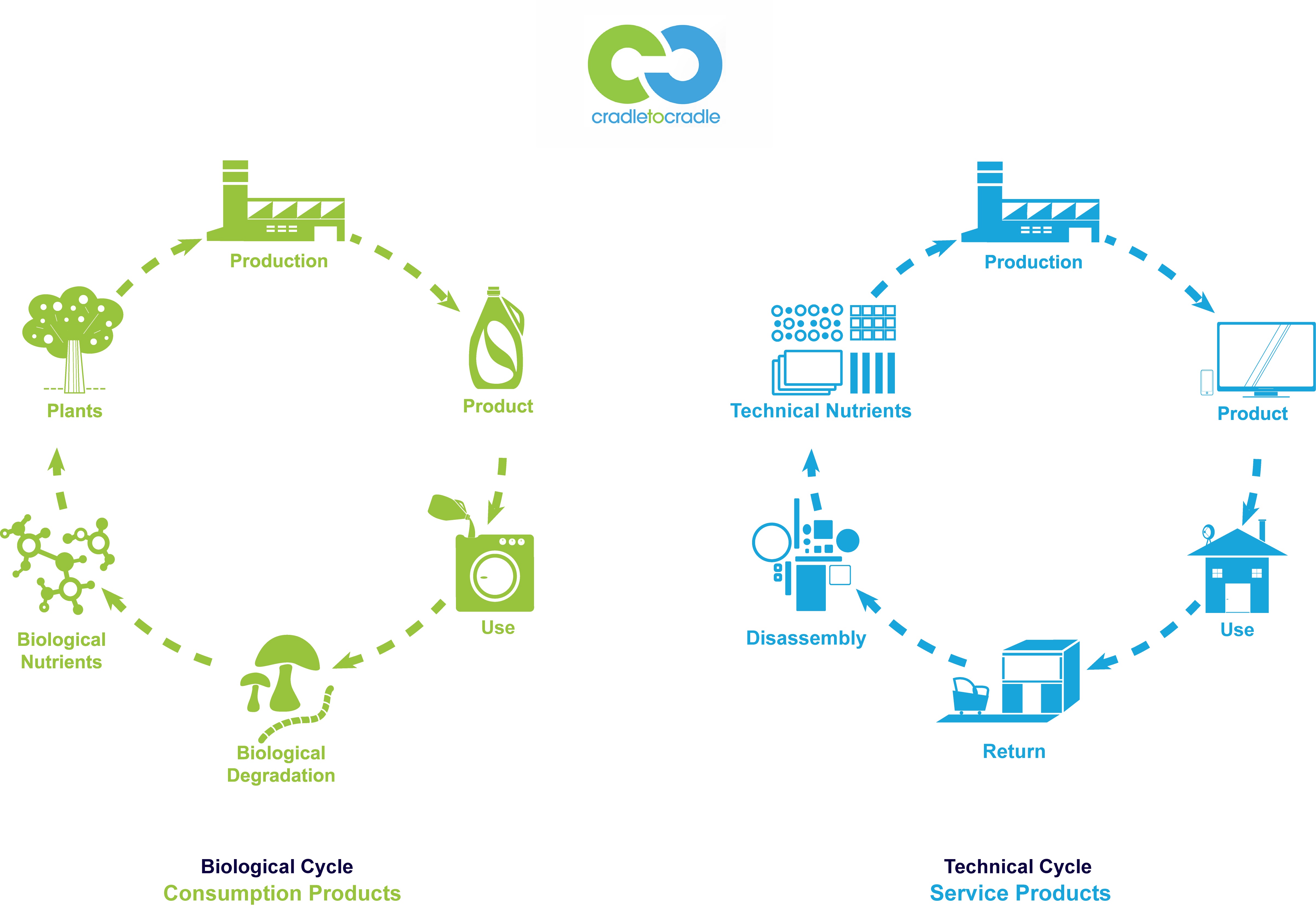8 Ways To Embrace A Circular Lifestyle
What does it mean to live and lead a circular lifestyle? What are the benefits? How and where do we begin?
As discussed in our previous blog post on fast fashion and the linear economy, we talked about how a circular economy model can potentially act as the solution to the massive climate change issue we are dealing with on a global scale. That is because, “in a circular economy, raw resources are fed back into the system, ideally creating a world where all energy and materials stay in a closed loop, which is critical to solving the growing crisis of dwindling resources.”
"Change doesn’t occur overnight, and for said change to be sustainable in the long run, we must also adopt a more sustainable and earth-friendly way of living."
What can we as individuals and as a community do in our everyday lives to help? Here are 8 ways to embrace a circular lifestyle:
1. Say no to fast fashion
Every year, the fast fashion industry produces and sells between 80 billion and 150 billion garments, where 75% of the supply chain material ends up in landfills or incinerators. In America, around 85% of the clothing consumed, nearly 3.8 billion pounds annually, end up in landfills as solid waste after just a few wears. These clothes then sit in landfills and release carbon dioxide, methane, and other greenhouse gases, further polluting our environment.
By not feeding into the fast fashion industry, which follows a linear economy model of take > make > waste, and shopping more sustainably as well as ethically, we can close the loop and reduce the amount of waste that is produced, and lessen the demand for fast fashion.

2. Be conscious of packaging
A lot of products on the market have unnecessary packaging that often can’t be recycled fully or at all. This is often seen with excessive amounts of plastic packaging on produce at the supermarket. Taking note of this when shopping, making the conscious effort to bring your own reusable bags and buy products that use recyclable or biodegradable packaging can make a difference. Additionally, we can take a further step and notify manufacturers and retailers to ban or reduce plastic packaging on their products.

3. Borrow, lend, lease, and share
Most people don’t own every single piece of equipment they need, whether it’s cameras or specific electric power tools, and that’s perfectly okay! Lots of equipment are costly, take up a lot of space, need special care and repair, and require a lot of resources to be made. Before purchasing a new equipment, consider asking those around you, borrow if possible, lend and share with others, or even lease them on peer-to-peer sharing platforms and online marketplaces.

4. Composting
The Natural Resources Defence Council (NRDC) defines composting as “the natural process of recycling organic matter, such as leaves and food scraps, into a valuable fertilizer that can enrich soil and plants”. The benefits of composting include reducing waste – currently 30% of what we throw away is made up of food scraps and yard waste that end up in landfills – reducing methane emissions, improving soil and lessen erosion by increasing the soil’s water retention capacity and productivity, and many more.
The 3 basic ingredients for composting:
- Browns - dead leaves, branches, twigs, etc.
- Greens - grass clippings, vegetable waste, fruit scraps, coffee grounds, etc.
- Water - the right amount of water, greens, and browns can help compost development greatly

5. Practice “zero-waste” or “low-waste” habits
Kathyrn Kellogg of Going Zero Waste explains that “the goal of zero waste is to move to a circular economy where we write trash out of existence,” mimicking the natural cycle of life in nature where “instead of discarding resources, we create a system where all resources can be resumed fully back into the system,” and thus closing the loop.
To go completely zero-waste can be very challenging and seem intimidating to most of us as we are so accustomed to living the way we have. However, the amount of waste humans produce, in addition to the resources we take, is destroying our environment and all the life on earth.
We can begin with cultivating daily habits; little by little, we can make a big difference. One of the main causes of this excessive amount of waste comes from how much we are buying and how quickly we throw things away. Thus, being conscious of our consumption habits, buying only what we need, is a good place to start. Other ways to reduce waste include reusing, repairing, and recycling what we can adequately, save water and electricity, pick up your own trash and don’t litter, bring your own reusable tumblers, utensils, grocery bags, etc. Through these small actions in our everyday lives, together we can make an impact by living more sustainably.

6. Support sustainable brands – circular economy & cradle to cradle
More and more brands are following the circular economy model and creating eco-friendly products through sustainable ways as they realize that the current linear economy is not sustainable in the long run. Our planet’s resources are not unlimited, therefore it’s all the more important, now more than ever, for companies to adopt a circular model that will allow them to create products that can be reused and repurposed over and over again.
“The problem is that, for as long as industry has operated, almost all production is conducted on a ‘cradle-to-grave’ process: remove resources from the ground, convert them into products, and expect that products will at the end of their life be entirely discarded – ending up in landfill, recycled or incinerated. Regulations about recycling are leading to some improvement in the way waste is managed, but products are still generally designed for their useful lifetime, not for their ability to biodegrade or to be reformed into new products.” –– Research Outreach
Product designers, manufacturers, and brands all around the world “rely on the Cradle to Cradle Certified Product Standard as a transformative pathway for designing and making products with a positive impact on people and the planet.” This certification is globally recognized and ensures that products are made sustainably for the circular economy.
By supporting these brands, it shows them and the world that we care about our planet, that we are thinking of the future and the consequences, and that we are taking action towards saving our planet.

7. Upcycle and DIY
The act of upcycling means giving an old product new life through repurposing and enhancing. It is about materials or items that, once modified, have their lifespans expanded with new, added value than before.
Get creative and crafty! There are a multitude of ways the products we already own can be repurposed and reused again instead of tossing them out immediately after its original intended use.
Here are some fun upcycling ideas to check out!

8. Invest in higher quality and durable products
In order for the fast fashion industry to pump out new collections so fast, the quality and durability of these clothes go down. This means that, although clothes are being sold at lower prices, the materials and quality are also lower, leading to clothes being thrown away quicker.
This applies not just to clothing, but with just about any other product on the market. Cheaper doesn’t always mean better. So if possible, invest in higher quality products as they are made to be more durable and long-lasting, less likely to need repair or replacement, and thus creating less waste.

Habits, whether they are good or bad, take time to cultivate and form. Similarly, they take time to break and change too. But it’s possible, with the right mindset and goals, with effort and practice, they will become natural to you with time.
Each and every one of us can embrace a circular lifestyle in our own ways and in our own communities. If we take one step at a time, and start with small, manageable changes in our daily lives, we are already making an effort to make the world a better place. Change doesn’t occur overnight, and for said change to be sustainable in the long run, we must also adopt a more sustainable and earth-friendly way of living. Let’s do our best so that our efforts don’t go to waste!
Sources:
- https://www.ingwb.com/media/2834784/ing-circulareconomy-five-tips.pdf
- http://thekindplanet.com/circular-lifestyle
- https://www.minimumwaste.eu/post/circular-economy-in-everyday-life
- https://epea.com/en/about-us/cradle-to-cradle
- https://www.epa.gov/recycle/composting-home
- https://www.nrdc.org/stories/composting-101#whatis
- https://www.vox.com/the-goods/2020/1/27/21080107/fashion-environment-facts-statistics-impact
- https://ehjournal.biomedcentral.com/articles/10.1186/s12940-018-0433-7
- https://www.goingzerowaste.com/zero-waste-1/
- https://researchoutreach.org/articles/cradle-cradle-principles-change-products-designed/
- https://youmatter.world/en/definition/upcycling/
- https://www.boredpanda.com/creative-reuse-upcycling-repurposing-ideas/?utm_source=google&utm_medium=organic&utm_campaign=organic

Leave a comment
Please note, comments must be approved before they are published